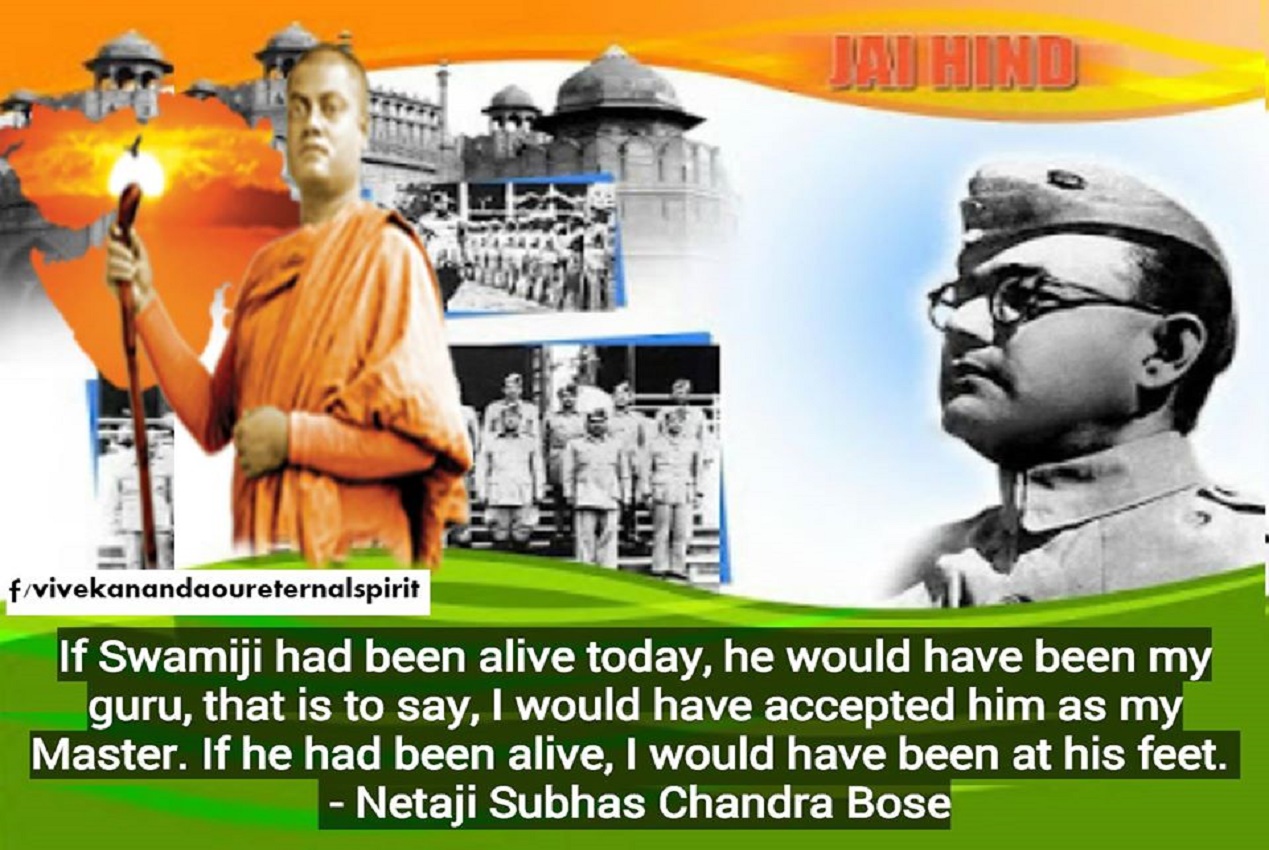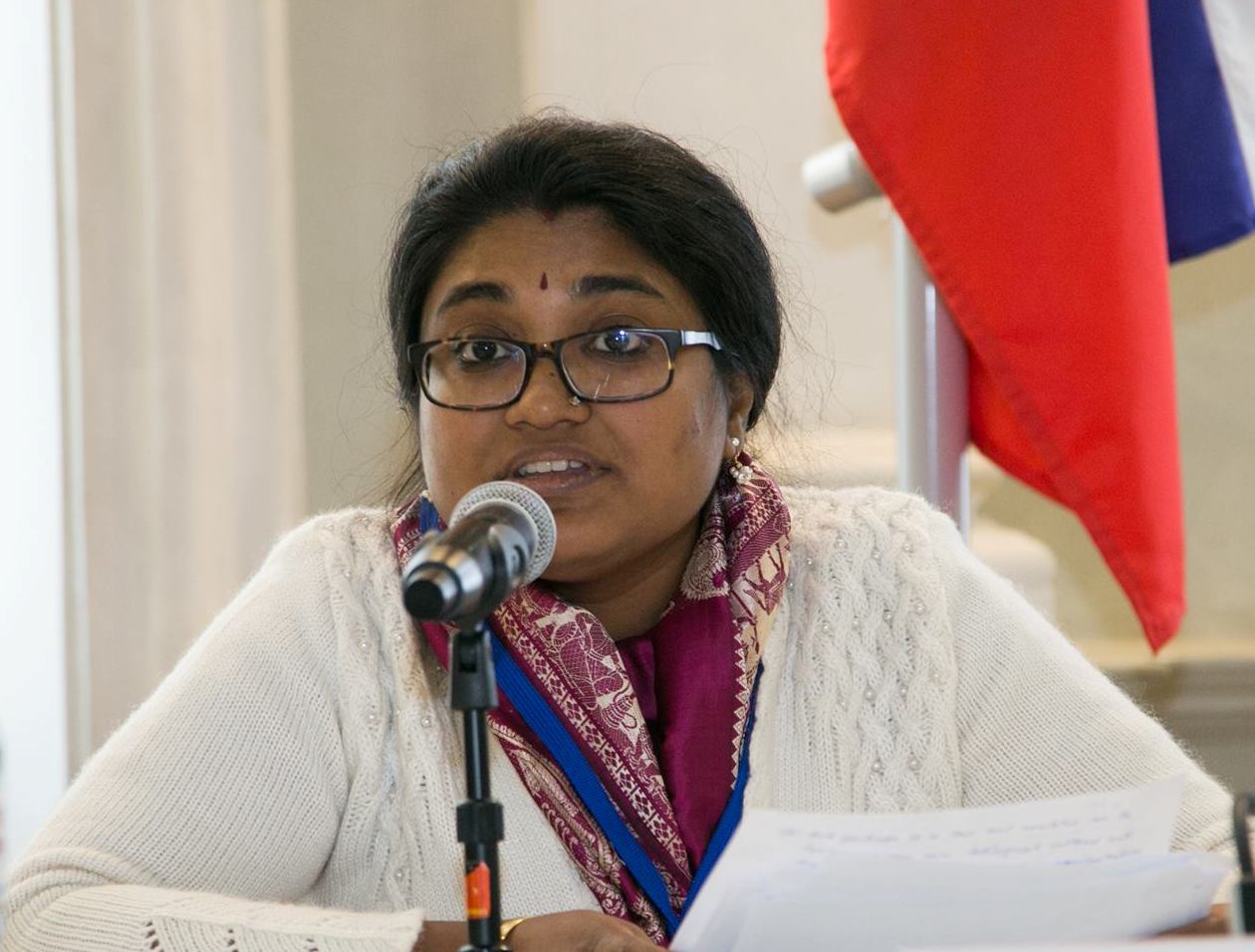Swami Vivekananda’s true place in Indian history, his contribution in the making of modern India has not been duly assessed by Indian historians. It is impossible to fully assess the extent of his impact on the course of national or even world events, as the influence of such personalities like him are deep and all-pervasive, but also subtle and silent. This essay is only a modest attempt to present briefly his influence on some of our freedom fighters. Netaji Subhas Chandra Bose’s debt to Vivekananda is relatively well-known. But what about others? Be it leaders like Mahatma Gandhi (1869-1948), who adopted a non-violent stand or revolutionary leaders like Hemchandra Ghosh (1888-1980) all could draw equal inspiration from Vivekananda’s capacious patriotism. He even exerted great spiritual influence on Aurobindo Ghose (1872-1950), who later became Sri Aurobindo.
Swami Vivekananda’s impact on the Indian national movement has been recorded by the nationalists themselves. Gandhiji, in fact, tried to meet him when he was visiting Calcutta for his first Congress Session held in that city in 1901. In his Autobiography, Gandhi notes that, in his enthusiasm, he almost walked all the way to Belur Math. He was very moved by the site but was disappointed to know that Swamiji was in Calcutta then, and was very ill and unable to receive visitors.1 This was probably sometime in early 1902. Swamiji would pass away ina few months. Subsequently, on 30 January 1921, Mahatma Gandhi attended the birth anniversary celebrations of Swami Vivekananda at Belur Math. He was requested to give a speech and he spoke in Hindi. Among other things, he said that “he bore great respect for late Swami Vivekananda. He had studied many of his books and said that his ideals agreed in many respects with that great man. If Vivekananda were alive it would have been a great help for their national awakening. However, his spirit was amongst them and that they should do their best to establish swaraj. He said that they should learn to love their country before anything else and they should be of one mind.”2 Elsewhere Gandhiji had recorded how he was one with Swamiji in his sympathy for the poor masses of India who had been “suppressed” by their own privileged brothers: “It was Swami Vivekananda who reminded us that the upper classes had suppressed a portion of themselves, and had thereby been depressed themselves. You cannot lower the members of your own species without lowering yourselves.”3
Hemchandra Ghosh was a revolutionary. He was the founder and foremost leader of Dhaka Mukti Sangha. He is the one who gave the novelist Saratchandra Chattopadhyay the idea of the character of the ideal revolutionary Sabyasachi for his novel Pather Dabi (1926). Ghosh was also the preceptor of Benoy, Badal, Dinesh—the three young revolutionaries who attacked the Writers’ Building in Calcutta. Ghosh met Vivekananda with a band of friends when the latter was visiting Dhaka in 1901. He writes in his reminiscences that Swamiji’s categorical instruction to them was: “India should be free politically first, because nobody in the world comity of nations will ever respect or listen to a colonized country. And take it from me that India shall be free. No power on earth can resist this fact and I tell you, that moment is not very far.”4 He also notes the following counsel of Swamiji: “Foremost of all, have character. If you want to serve Mother India, be brave. Proceed to relieve her suffering after acquiring great power and courage.”5 Hemchandra fondly remembered Swamiji not as a distant idol, but as an elder brother who showed the way to the Indian youth, as somebody very close to the heart of the revolutionaries who sacrificed their lives at such a young age for the country.
So we see that while on the one hand, Gandhi was moved by Vivekananda’s sympathy for the “suppressed classes”, on the other hand, the latter inspired young men like Hemchandra to organize themselves for struggle against the British. Yet again, Swamiji played a significant role in the spiritual evolution of the nationalist leader Aurobindo Ghose, who finally abandoned worldly life in the quest for the Eternal. Sri Aurobindo has acknowledged that Swamiji’s spirit visited him for several days in Alipore Jail to instruct him regarding the higher levels of spiritual consciousness: “It is a fact that I was hearing constantly the voice of Vivekananda speaking to me for a fortnight in the jail in my solitary meditation and felt his presence. The voice spoke only on a special and limited but very important field of spiritual experience and it ceased as soon as it had finished saying all that it had to say on that subject.”6 Sri Aurobindo acknowledged his spiritual debt when he wrote: “Remember also that we derive from Ramakrishna. For myself it was Ramakrishna who personally came and first turned me to this Yoga. Vivekananda in the Alipore jail gave me the foundations of that knowledge which is the basis of our sadhana.”8
There were many other nationalist leaders who were influenced by Vivekananda. We also see that his influence on different people had been varied and multi-dimensional—it covered social, political, as well as spiritual domains—but in sum, was national in character, in as much as it inspired them to live and die for India. In 1897, Swamiji said: “For the next fifty years this alone shall be our keynote — this, our great Mother India.”8 And exactly after fifty years, India gained Independence!
Endnotes
- Collected Works of Mahatma Gandhi, vol. 44, New Delhi: Publications Division, GoI, 1999, p. 268.
- Collected Works of Mahatma Gandhi, vol. 22, p. 291.
- Collected Works of Mahatma Gandhi, vol. 30, p. 401.
- Swami Purnatmananda, Swami Vivekananda ebong Bharater Swadhinata Sangram, Kolkata: Udbodhan, 1988, p. 78 (partly translated from Bengali by Arpita Mitra).
- Swami Purnatmananda, ed., Smritir Aloy Swamiji, Kolkata: Udbodhan, 1989, p. 228 (translated from Bengali by Arpita Mitra).
- Complete Works of Sri Aurobindo, vol. 36, Pondicherry: Sri Aurobindo Ashram Trust, 2006, pp. 98-99.
- Ibid., p. 179. In both the cases of Sri Ramakrishna and Swami Vivekananda, Sri Aurobindo is not referring to their arrival at the physical plane.
- The Complete Works of Swami Vivekananda, vol. III, Kolkata: Advaita Ashrama, 1989, p. 300.
(The paper is the author’s individual scholastic articulation. The author certifies that the article/paper is original in content, unpublished and it has not been submitted for publication/web upload elsewhere, and that the facts and figures quoted are duly referenced, as needed, and are believed to be correct). (The paper does not necessarily represent the organisational stance... More >>
Image Source: https://www.facebook.com/swamiji.vivekanandaoureternalspirit/photos/a.747205851992786/1670042689709093/?type=3&theater











Post new comment